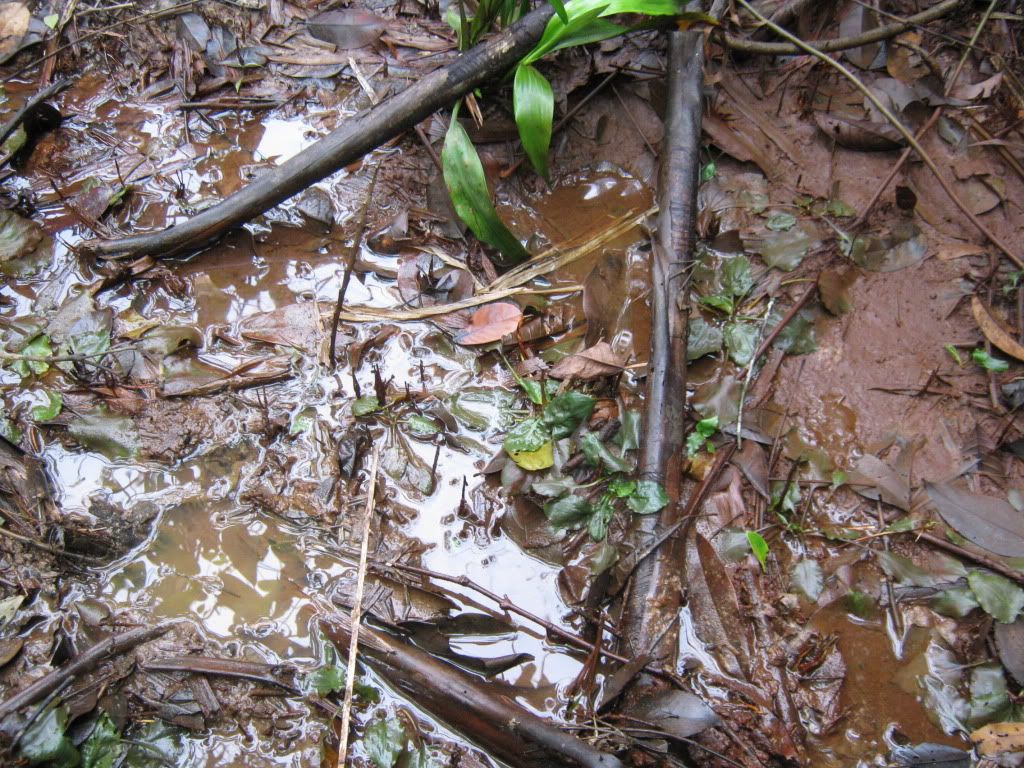Many hobbyists recently reported finding C. xpurpurea in Malacca state and therefore I went with my explorer friend to take some photographs of it too. Below is a photograph of the overview of the natural habitat, a stream flowing out of the forest.
The leaves had cordate shape with upper side being greenish and lower side being either greenish or reddish.
The below photograph shows the typical size of a specimen and the root area having rhizome.
The pH of the water was about 6.5 and the substrate was a mixture of gravel and sand.
We found 2 unopened spathes and 2 opened spathes.
One of the opened spathe had its limb slightly torn already.
The other opened spathe was with better condition showing the slightly raised orange collar and the pink limb which was unusually long and distinctively arched.
As usual we cut open a kettle to take photographs of the male and female portion of the flower and as usual, we spotted a fly being trapped inside the limb. The fly was in a daze with its wings slightly wet, allowing us the opportunity to take photographs of it without flying away immediately.
See below for the male and female portion of the flower. I personally felt that the stigma was not the typical round and white rabbit tail shape as shown in
'the crypt pages'.
We had a bowl of Maggi chicken flavoured instant noodle with egg each for lunch at one small coffee shop as a reward for locating the above.
So it the identification above (i.e. C. xpurpurea) correct? I will leave it to the viewer to decide for yourself.







































